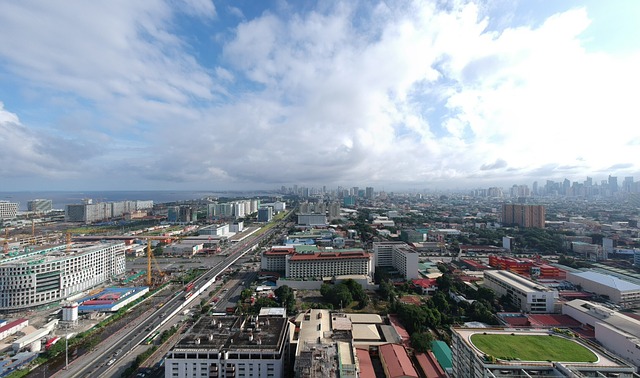
-
The Inter-Agency Task Force for the Management of Emerging Infectious Diseases on September 13 released guidelines for the pilot implementation of a new alert level system in Metro Manila, which begins September 16, 2021
-
The system will have five levels, with level 5 as the strictest and will require following enhanced community quarantine protocols
-
Granular lockdown is a micro-level quarantine for areas identified as “critical zones” by the local government unit
-
The Department of Health will identify alert levels of the pilot area while the authority to impose granular lockdowns is given to city and municipal mayors
-
Only a certain number of Authorized Persons Outside Residences and only under certain situations are they allowed to enter and/or exit areas under granular lockdowns
The Inter-Agency Task Force for the Management of Emerging Infectious Diseases (IATF) on September 13 released guidelines for the pilot implementation of a new alert level system in Metro Manila beginning September 16, 2021.
The new system, which will take effect a day after the modified enhanced community quarantine status in Metro Manila ends on September 15, aims to further curb the spread of COVID-19 and its variants, and “proactively advocate the principles of 3Cs (closed, crowded and close contact) strategy,” Presidential spokesperson Harry Roque said in a statement on the evening of September 13. The 3Cs are categories of industries or activities whose operational capacity will depend on the alert levels.
“We should strive for total health and this can only be realized by carefully balancing our COVID-19 response by considering both the health of our people and the economic health of the nation, which this policy shift is all about,” Roque added.
Roque earlier said the objective of the pilot implementation is to assess if “granular” or small-scale lockdowns could more effectively reduce transmissions than wide-scale community quarantines, now seen as ineffective.
Levels of alerts
Under the guidelines, there will be five alert levels under the new alert level system:
- Alert Level 1 – areas where case transmission is low and decreasing, total bed utilization rate is low, and intensive care unit utilization rate is low
- Alert Level 2 – case transmission is low and decreasing, healthcare utilization is low, or case counts are low but increasing, or case counts are low and decreasing but total bed utilization rate and intensive care unit utilization rate are increasing
- Alert Level 3 – case counts are high and/or increasing, with total bed utilization rate and intensive care unit utilization rate at increasing utilization
- Alert Level 4 – case counts are high and/or increasing, with total bed utilization rate and intensive care unit utilization rate at high utilization
- Alert Level 5 – case counts are alarming, with total bed utilization rate and intensive care unit utilization rate at critical utilization
Areas under Alert Level 5 should observe guidelines applicable to enhanced community quarantine.
For Alert Level 4, establishments and/or activities characterized as high risk for transmission will not be allowed to operate.
For Level 3, certain establishments or activities will be allowed to operate, or be undertaken at a maximum of 30% on-site or venue/seating capacity.
For Level 2, except those located in areas under granular lockdowns, certain establishments, persons, or activities will be allowed to operate, work, or be undertaken at a maximum of 50% on-site or venue/seating capacity.
Certain business establishments in areas under Levels 3 and 2 that are awarded Safety Seal Certifications will be allowed to operate at an additional 10% beyond the prescribed on-site or venue/seating capacity, whichever is applicable.
For Level 1, all establishments, persons, or activities, except for those located in areas under granular lockdowns, are allowed to operate, work, or be undertaken at full on-site or venue/seating capacity but consistent with minimum public health standards.
Protocols for locked down zones
Meanwhile, granular lockdown refers to a micro-level quarantine for areas identified as “critical zones” by the local government unit which may be declared regardless of the alert level.
The Department of Health will identify alert levels of the pilot area. During the pilot implementation, classification of the pilot area will be done weekly.
Close contacts, regardless of the vaccination status and possession of a negative COVID-19 test result, of probable and confirmed COVID-19 cases will undergo a 14-day quarantine.
Minimum public health standards should be implemented at all times.
The authority to impose granular lockdowns is given to city and municipal mayors. Granular lockdowns may be imposed on residential buildings, streets, blocks, puroks, subdivisions, and/or villages for a period of not less than 14 days.
The list of Authorized Persons Outside Residences (APOR) under the IATF Omnibus Guidelines on the Implementation of Community Quarantine in the Philippines, as amended, will not apply in areas under granular lockdowns.
Only health care workers and non-health personnel working in hospitals, laboratories, and dialysis facilities whose institutions are unable to provide accommodation for their personnel, and uniformed personnel tasked to enforce the granular lockdown, will be allowed to move within, into, and out of the area under granular lockdown.
The following will be allowed to enter and/or exit granular lockdown areas for specific purposes:
- Overseas Filipino Workers bound for international travel and those returning to their respective residences after having completed facility-based quarantine upon arrival
- Individuals whose home or residence is located within an area under granular lockdown may enter the said area solely to return to their respective homes or residences but must remain there for the duration of the granular lockdown
- Individuals under exceptional circumstances such as, but not limited to, those seeking urgent medical attention as validated by the municipal/city health officer
- Food and essential items intended for delivery within an area under granular lockdown provided they are unloaded at border collection points designated by the LGU.




